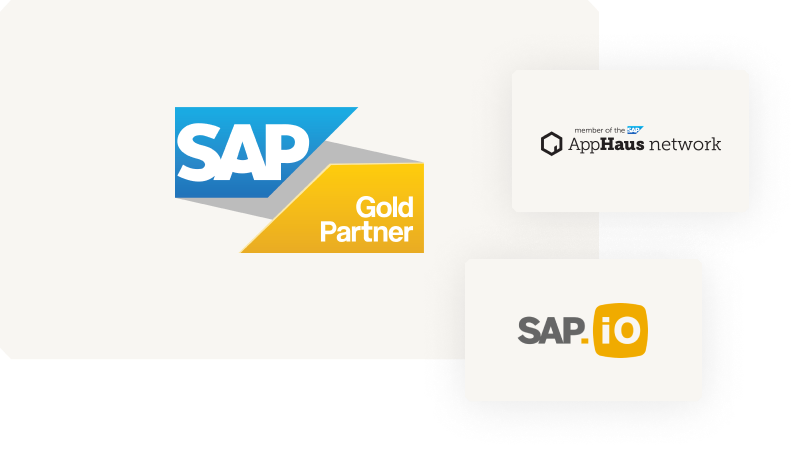The best way to stand out in today’s crowded market is to respond to your customers’ needs in real-time. But many organizations are still struggling to find a solution that enables them to unify online and offline data, and use that data to trigger actions towards their customers.
SAP Customer Data Platform helps you understand your customers’ needs and behaviours on a deeper level – giving you a way to provide additional value at just the right time in their customer journey. This gives you the opportunity to delight them every step of the way,, while making sure you respect their privacy and the international regulations.
As part of the SAP Customer Experience suite, SAP CDP enables agile, customer-centric business models that will help you win in the digital era.
Your benefits of using SAP Customer Data Platform
Simplify Your Business Growth
Uncover hidden opportunities to boost revenue
Improve customer conversion, retention and loyalty
Navigate evolving data privacy challenges
Boost business growth while keeping IT costs in check
Features of SAP Customer Data Platform
Three Core Pillars
Companies collect customer data every day. But the huge amount of data they have – and the data silos present in most organizations – prevent them from getting the most out of it. SAP Customer Data Platform (SAP CDP) is based on three pillars which provide a foundation to organize, manage, and utilize your customer data in a structured way.
Related SAP Customer Data products

SAP Customer Data Cloud
learn more
SAP Emarsys Customer Engagement
learn moreInterested in SAP CDP implementation? We're happy to help.
Frequently Asked Questions (FAQs) about SAP Customer Data Platform
1. What kinds of customer data can be integrated into SAP CDP, and how is this data collected and synchronized from different sources?
SAP CDP brings together:
- Demographic data: like age, gender, or location
- Behavioral data: how customers interact with your website, emails, or mobile applications
- Transactional data: records of past purchases or customer service interactions
- Preferences: for example, communication preferences or product interests
- Social media data: customer interactions on social media platforms
These different types of customer data are pulled from various online and offline touchpoints, such as your website, social media channels, CRM, email marketing platforms, or in-store transactions. SAP CDP uses real-time connectors, APIs, and file storages to pull in data automatically, ensuring it’s always up to date.
2. What measures does SAP CDP have to ensure data privacy and compliance with regulations like GDPR or CCPA?
SAP Customer Data Platform ensures data privacy and compliance by managing customer consent, anonymizing personal data, and allowing customers to access, correct, or delete their data. It maintains detailed logs of data access and changes for transparency and uses advanced security measures like encryption and secure authentication to protect data.
Additionally, SAP CDP is continuously updated to comply with global data privacy regulations, ensuring your business stays compliant and builds trust with your customers through its commitment to data protection.
3. Is SAP CDP the same as SAP CDC?
SAP CDP and SAP CDC (Customer Data Cloud) are related but serve different purposes.
SAP CDP focuses on unifying and analyzing customer data from various sources to create a 360 profile of each customer. It helps businesses personalize customer interactions and make data-driven decisions.
SAP CDP also often acts as the underlying unified data source for other SAP and non-SAP solutions across the CX landscape.
On the other hand, SAP CDC is more about managing customer identities and consents. It ensures compliance with data privacy regulations and allows customers to control their data preferences.
When working with customers, we often recommend using both solutions together to ensure your customer data is safe and your company is compliant with data protection regulations.
4. How do we use SAP CDP to track and analyze the effectiveness of our marketing campaigns across different channels?
First, SAP CDP consolidates data from all your marketing channels, such as email, social media, websites, and in-store interactions. By integrating this data, you get a unified view of customer interactions across all touchpoints.
CDP also supports marketing systems such as Emarsys by enriching their trend and analytics insights with data collected from other sources that marketing systems and marketers often can’t access. In essence, SAP CDP enables you to measure the success of your campaigns, optimize your strategies, and ultimately improve your marketing ROI by making data-driven decisions.
5. What are the technical requirements for integrating SAP CDP with our IT infrastructure?
Integrating the SAP Customer Data Platform with your current IT infrastructure primarily requires API connectivity to link with your existing systems, such as CRM and marketing platforms. You’ll need data integration tools to facilitate data transfer and a comfortable setup with cloud infrastructure since SAP CDP is cloud-based.
As part of our joint work, we will ensure your IT environment meets security and compliance standards, is scalable for future growth, and provides technical expertise in SAP solutions and API management.
6. How can we scale up and expand the use of SAP CDP as our business grows?
As your business grows, the SAP Customer Data Platform can easily scale to meet your expanding needs. Built on a cloud infrastructure, it allows you to effortlessly increase storage and processing power.
Its modular, cloud-native architecture lets you add new features, integrate additional data sources and third-party systems, and enhance analytics capabilities without major changes to your setup.
7. What best practices should we follow to maintain optimal performance of SAP CDP?
To ensure the SAP Customer Data Platform is running smoothly, start by regularly cleaning up your data to remove duplicates and outdated information. This will keep everything running efficiently and ensure your insights are spot on.
Monitor performance and system health metrics to detect potential issues early. Ensure that your data integration is streamlined, using batch processing for large transfers and real-time updates for crucial data.
Together with our customers, we evaluate all new features that are continuously being released to the platform. We also follow strong security practices to protect your data and maintain performance.
8. How can we leverage the data in SAP CDP for predictive analytics and machine learning models?
Leveraging the data in SAP CDP for predictive analytics and machine learning involves a few key steps.
First, the SAP Customer Data Platform consolidates and cleans your customer data, providing a reliable dataset for analysis.
You can then use SAP’s built-in analytics tools and predictive insight capabilities in CDP, use standard connectors to other analytical SAP solutions, or integrate with any other analytics platforms to develop tailored machine learning models.
These models can help forecast customer behavior, identify trends, and personalize marketing efforts. By continuously feeding new data into these models, you can refine predictions and improve accuracy over time, driving smarter business decisions and more effective strategies.










